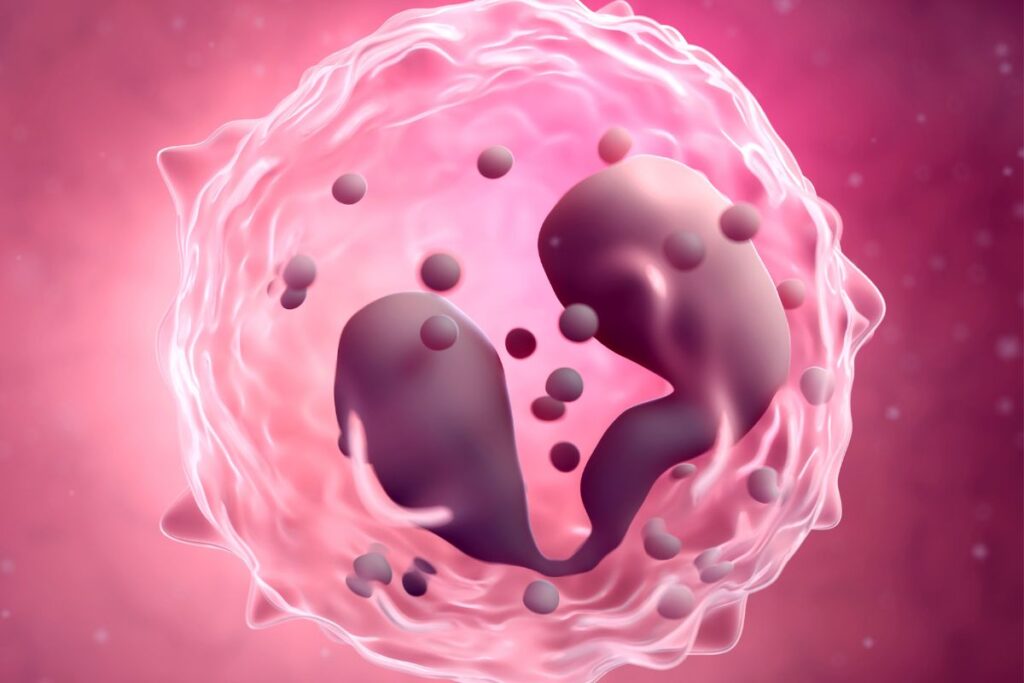If you’ve been diagnosed with eosinophilia, a high level of eosinophils in your blood, you might be wondering what it means for your health. White blood cells called eosinophils are responsible for your body’s allergic reaction. While eosinophilia is often linked to allergies, it can also be a sign of other underlying conditions that need urgent attention. Here’s what you need to know and how to address this issue.
What is eosinophilia?
Eosinophilia occurs when there is an elevated number of eosinophils in the blood. White blood cells called eosinophils are important in allergic reactions and help fight off infections, especially those caused by parasites. High levels of eosinophils can indicate an allergic response or the presence of certain diseases, including asthma, eczema, or even more serious conditions like autoimmune diseases or certain cancers.
Symptoms of Eosinophilia
Eosinophilia itself might not cause direct symptoms, but it can be linked to the following conditions:
● Asthma: Eosinophilia is often seen in people with asthma, particularly if they have allergic asthma.
● Eczema: Skin rashes, itching, and inflammation caused by allergic reactions.
● Allergic rhinitis: Hay fever, which can cause sneezing, a runny nose, and itchy eyes.
● Abdominal pain or diarrhea: In cases of parasitic infections, eosinophilia may be accompanied by digestive symptoms.
Red Flags:
● Chronic allergies or asthma symptoms
● Unexplained weight loss or fatigue
● Blood tests showing significantly elevated eosinophil levels
● Skin rashes or breathing problems
How Doctors Will Approach Eosinophilia
A blood test that shows elevated eosinophil levels is the first indicator. To determine the cause, the doctor may order further tests, including a skin prick test for allergies, CT scans for signs of internal issues, or tests for parasitic infections. The doctor will also review your medical history and symptoms to find any underlying conditions contributing to eosinophilia.
Treatment Options for Eosinophilia:
● Corticosteroids: These medications can help in reducing inflammation and managing allergic reactions.
● Allergy medications: Antihistamines and leukotriene inhibitors can help control the effects of allergies.
● Immunotherapy: Your immune system can become less sensitive to specific allergens with the use of allergy injections or sublingual pills.
● Management of underlying conditions: The most effective way to control eosinophilia is to treat its root cause, which could be autoimmune illnesses, infections, or asthma.
FAQ :
What causes eosinophilia?
Eosinophilia is often caused by allergic reactions, asthma, skin conditions like eczema, or parasitic infections. In some cases, it may be a sign of more serious conditions like autoimmune diseases or certain cancers.
How is eosinophilia treated?
Treatment focuses on managing the underlying condition causing the elevated eosinophils, such as using asthma medication, allergy treatments, or antiparasitic drugs.
Can eosinophilia go away on its own?
At times, if you focus on treating, what is the reason for increased eosinophil levels, then maybe it can subside. But it’s important to follow your doctor’s guidance for treatment.
Can eosinophilia lead to complications?
If left untreated, eosinophilia can be a sign of chronic conditions that can affect your overall health. If you can manage the condition early on, then you can prevent serious complications.
How HealthPil Can Help:
Whether eosinophilia is related to allergies, asthma, or another illness, HealthPil helps you find qualified medical professionals who can diagnose and treat it. To get the best treatment strategy for your symptoms, schedule a consultation.
Disclaimer:
This article is for informational purposes only and should not replace professional medical advice. Always consult your doctor for a proper diagnosis and treatment plan. HealthPil connects you with trusted doctors who can help manage eosinophilia and related conditions effectively.

